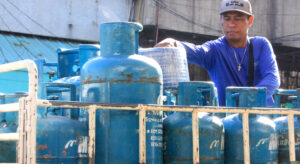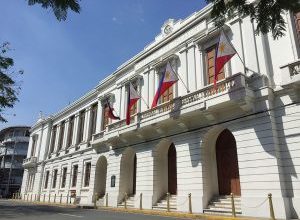Philippine inflation cools to slowest in 6 months

By Keisha B. Ta-asan, Reporter
Philippine headline inflation cooled in March to the slowest in six months, amid lower prices of food and transport, the statistics agency said.
However, core inflation, which excludes volatile food and fuel prices, accelerated to the fastest since December 2020.
Preliminary data from the Philippine Statistics Authority (PSA) showed annual headline inflation eased to 7.6% from 8.6% in February, but much faster than the 4% print a year ago.
March inflation was the slowest print since the 6.9% print in September 2022. This is also below than the 8.1% median from a BusinessWorld poll conducted last week.
“The March 2023 inflation outturn of 7.6% is within the BSP’s (Bangko Sentral ng Pilipinas) forecast range of 7.4-8.2%, consistent with the overall assessment that inflation will remain elevated over the near term before gradually decelerating back to target range towards end-2023,” the central bank said in a statement.
Seasonally adjusted, inflation recorded zero percent monthly rate in March from 0.3% in February.
For the first quarter, the consumer price index (CPI) averaged 8.3%, higher than the central bank’s full-year forecast of 6% and the 2-4% target band.
Core inflation, on the other hand, quickened to 8% in March, from 7.8% in February and 2.2% a year ago. This is its highest clip since the 8.2% seen in December 2000.
At a press briefing, PSA Undersecretary and National Statistician Claire Dennis S. Mapa said food and non-alcoholic beverages were the main source of the deceleration in March inflation.
The index for food and non-alcoholic beverages eased to 9.3% from 10.8% in the previous month.
Food inflation alone decelerated to 9.5% in March from the 11.1% in February.
Mr. Mapa said the downtrend in food inflation was due to slower rise in prices of vegetables, tubers, plantains and cooking bananas (20% in February from 33.1% in February), meat and other parts of slaughtered land animals (4.6% from 6.5%), and sugar, confectionery and desserts (35.2% from 37%).
Price increases oils and fats, as well as corn, also slowed during the month.
However, higher annual increases were seen in rice; milk and other dairy products; fruits and nuts; and ready-made food products.
The PSA also reported prices of housing, water, electricity, gas and other fuels, slowed to 7.6% in March from 8.6% in February.
Transport inflation also decelerated to 5.3% in March, from 9% in February as pump prices declined.
For the month, pump price adjustments stood at a net decrease of P0.65 a liter for gasoline, P1.75 a liter for diesel, and P3.25 a liter for kerosene.
Mr. Mapa said the PSA is currently monitoring global oil prices after the Organization of the Petroleum Exporting Countries and its allies (OPEC+) recently announced an output cut of about 1.16 million barrels per day (bpd).
“If we look at what happened last year, higher global oil prices affected the prices of gasoline and diesel, which is what we are monitoring. There is a lagged effect on transport, as well as to other commodities being delivered through land,” Mr. Mapa said in Tagalog.
“It created spillovers to other commodity items, as what we’ve seen during the 2022 round when the price of oil started increasing,” he added.
Meanwhile, the inflation rate for the bottom 30% income households eased to 8.8% in March from 9.7% in February. Still, this is higher than the 4.2% in March 2022.
Inflation in the National Capital Region also slowed to 7.8% in March, from 8.6% in February. Areas outside of NCR also saw inflation ease to 7.5% in March, from 8.5% in the prior month.
National Economic and Development Authority (NEDA) Secretary Arsenio M. Balisacan said inflation must still be monitored and urgently addressed despite its slowdown.
“Protecting the purchasing power of Filipinos, especially the most vulnerable sectors of the economy, is one of the top priorities of the administration. We are committed to provide policy advice and anticipatory recommendations that are supported by data to manage inflation and protect the Filipino families,” Mr. Balisacan said in a statement.
Finance Secretary Benjamin E. Diokno said the March inflation number supports his view “that the monetary authorities have done enough to tame inflation with its 425bps policy rate increase.”
“The focus now should be on the supply side of the equation, of which the national government authorities play a bigger role… We remain focused on treating inflation as an immediate and long-term concern. We continue to monitor domestic and external developments to make sure that inflation remains on its downward path and that it eventually falls within the 2% to 4% target range,” Mr. Diokno said.
PERSISTENT CORE INFLATIONPSA’s Mr. Mapa said headline inflation appears to have peaked in January, when it hit a 14-year high of 8.7%.
“Of course, we want to bring inflation down further, but the core inflation is higher. Some of the items on the basket seems to be increasing still,” he said.
In a note on Wednesday, ING Bank N.V. Manila Senior Economist Nicholas Antonio T. Mapa said receding supply side pressures helped slow headline inflation, but second round effects resulted in faster increases for restaurants and personal services.
Based on PSA data, the index for restaurant and accommodation services rose to 8.3% in March from 8.1% in February. Personal care and services also grew to 5.6% from 5.3% a month prior.
Bank of the Philippine Islands (BPI) Lead Economist Emilio S. Neri, Jr. said restaurants continued to increase their prices despite the slower rise in food costs.
“With demand remaining strong, (restaurants) have the space to pass on the cost to consumers. It may take several months for restaurant inflation to go down from 8% to 4%,” Mr. Neri said in a note.
He also said demand continues to surpass supply in several items of the CPI basket.
“To add to this, recent developments may contribute to inflation and prevent it from going back to target. One of these is the decision of OPEC+ to cut their oil production. The price of oil has gone up recently because of this, in addition to the reopening of China,” Mr. Neri said.
“Moreover, cases of African Swine Fever have been recorded in certain parts of the country, particularly in the Visayas. This may complicate further the efforts to fix the agricultural supply chain and to bring down food prices,” he added.
ANOTHER RATE HIKE?Mr. Neri also noted that the rise in core inflation may prompt another rate hike from the Monetary Board, as additional tightening may hasten the process of bringing down inflation back to the 2-4% target range.
According to the BSP, upside risks to the inflation outlook for 2023 and 2024 continue to persist.
“The effect of supply shortages on domestic food prices remains a concern, while the potential impact of higher transport fares, increasing electricity rates, as well as above-average wage adjustments in 2023 point to the broader-based nature of price pressures,” the BSP said.
“The BSP will continue to adjust its monetary policy stance as necessary to prevent the further broadening of price pressures as well as the emergence of additional second order effects,” it said.
University of Asia and the Pacific Ronilo M. Balbieran said the BSP can still implement another 25-basis-point (bp) rate hike at its May 18 meeting as a precaution.
“I think a precautionary move to further hike at least 25 bps will finally seal the deal in terms of making sure that we have that very deliberate path towards 4% inflation by November-December,” Mr. Balbieran told CignalTV’s OneNews.
The Monetary Board has increased borrowing costs by 425 bps since May last year, bringing the benchmark rate to 6.25% – the highest since 2007.
Hongkong and Shanghai Banking Corp. economist for the Association of Southeast Asian Nations (ASEAN) Aris Dacanay said there is still room for rate hikes as growth is still intact amid robust consumption.
“Thus, we expect the BSP to carry out one last 25bp hike in the May Monetary Board meeting before pausing its tightening cycle – and the pause will likely be a hawkish one since inflation, albeit easing, is still well above the BSP target band of 2-4%,” Mr. Dacanay said.
But the supersized cuts in oil supply abroad are considered as an upside risk to the policy rate outlook, he said.
“If a rise in domestic fuel prices spills over to core CPI again, then there will be another inflation wave that the BSP will need to deal with,” Mr. Dacanay said.




